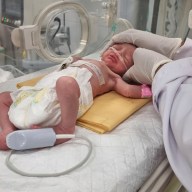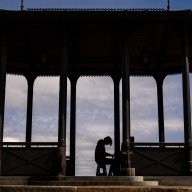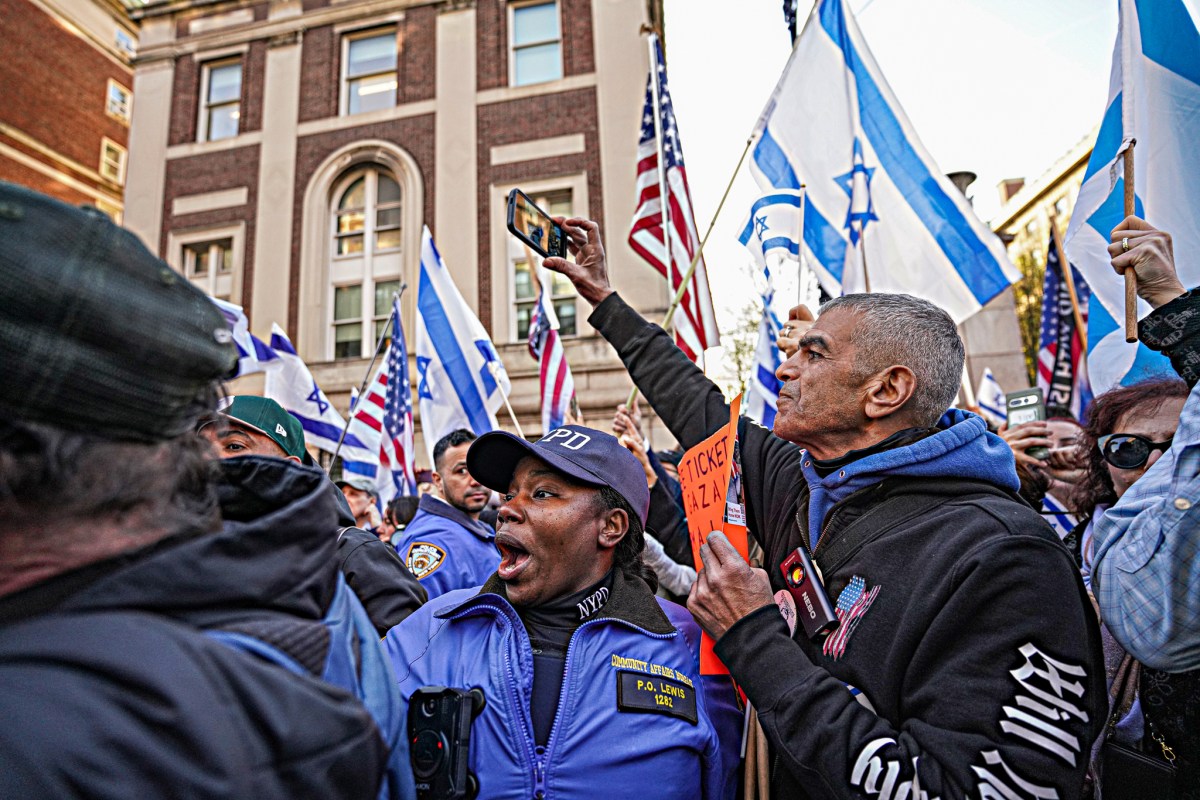The first time Metro encountered the British band Django Djano, the only music they had released were a few EPs of remixes that made it difficult to figure out what type of music they actually played. How do you identify the most authentic vision of a song when you are presented with so many choices? Then we caught the band live at SXSW and they demonstrated a vibrancy that wasn’t initially evident in their studio recordings. They had the crowd jumping so much that it was difficult to see the stage. This reporter, upon first meeting the band for an initial sit-down asked about their shirts, which looked like matching pajama tops with cartoon strips of bacon on them. It turns out they were just black T-shirts that they had poured bleach all over. A few months later, producer David Maclean called us up to chat again.
Are you still wearing the bacon pajamas/bleached shirts when you perform live?
I think we still have some. I think we have similar T-shirts, some kind of shirts we’ve designed or we just kind of go through phases, wearing some kind of matching uniform type things, but not always. It just depends what we’re in the mood for really. We try to look like a unit on stage. That’s something we like to do, and I think as we progress and have more time we’ll definitely focus on doing a lot of those things because we’re on the road a lot so we kind of make up ideas on the move and make them D-I-Y. It’d be nice to sit down and design proper stage wear.
When I saw you guys I hadn’t heard the whole album yet. It wasn’t out in the States was it?
No it only comes out. I think its out today in the States.
Right, so it was interesting too for me to see you guys live and then hear the album. I had thought I had a grip of what the sound was, but then the album is different. It felt like the live shows was like, “OK, cool this is stuff you can dance to in the clubs” and then the album felt like this is something you go bring into the woods with friends and all listen to while spacing out.
Yeah, it just probably shows a progression. The album was made by me and Vinnie [Neff, singer and guitarist] sitting in my bedroom, a tiny little bedroom with a computer at the end of the bed, and just sort of plugging the guitar in and hitting some percussion and layered a lot. We weren’t working after college. We didn’t even think it was an album. … It was never created as an album until the label came along and said, “can we create it?” So we weren’t even a proper band, so when we got a drum kit and some amps and stuff and did a gig, then all that had to change and go out the window because we couldn’t sit there and layer up tracks of tambourines and tapping and trippy nonsense. We had to go live with something and being into dance music just kind of gets you started into a dance path so that would probably come back and reflect the way we record the next album. It all comes to a circle really.
How did you picture people listening to these songs? The trippy nonsense way or the dancing way?
Sort of neither. I mean I like listening to music walking around cities or on a bus. I don’t know, its weird listening to music and being absorbed into the music, so for me the psychedelic part was always, that was kind of my mind wandering a bit, not necessarily through psychedelic drugs, but through just sort of day dreaming and dreams, and escapism. I mean, yes, in the past we might have tripped on magic mushrooms and that gives you a kind of experience you draw on, but everything in life becomes that experience, whether it’s a relationship or a trip on acid or the time you went for a walk or the time you went fishing, you know, it doesn’t really matter to me. It all kind of ends up coming out subconsciously or consciously when you sit down to make music, so basically it was made through sitting down at the computer with the guitar and sort of playing out a lifetime of adventures. So then it’s kind of impossible to say where you imagine the listener would be at the time then enjoying or even how we were going to approach it live because it was such a weird way to make music in such a bubble. You know, it just means messing around. It was just hard to imagine how we would do it live. I think at one point we even talked about never doing a live gig. Then we just thought, you know, maybe we don’t even need to do a live gig, but as we got more confident and as we messed around more we got to do a live show and learned what we can do live, and I think the essential thing for us is to make it a bit more bombastic and strip back the elements to the kind of essential elements to restore things, and try not get caught up with recreating the album really.
Was it difficult to find the other guys who can do these sounds and would do what was on the record?
I guess towards the end or the middle of making the album, Tommy [Grace, synth operator] got involved, so he’d already given me a hand on the singing parts … and that would be him on the bass line, you know. I guess getting the members involved and getting us in a room, playing the music, it’s just about hoping to strip the layers back and what to keep in the samples, and we were quite conscious we didn’t want to use backing tracks or the sounds in them. We wanted to make the garagey ones more garagey and the fancy ones more fancy. We didn’t want to take the easy road of using too many samples, so I guess the day-to-day headaches of doing a live show is “What do you keep and what do you get rid of?” We hope we make it entertaining, really and we wanted to kind of make people dance.
You guys on paper are like a regular four-on-the-floor rock band, but when we see you, the restraint Vinnie practices on the guitar is impressive, just because he’s playing most of the time but it’s never that loud in the mix except for a song like “War.”
I think it just depends on the track and also it comes from the way we approach rock ‘n’ roll. For instance, like rock ‘n’ roll can be big, grungy, compressed guitar, but to us it’s more like Johnny Cash where there was much more emphasis on definition of sounds … and then you can sort of take that string of James Brown funk and then as the guitar takes a backseat, it became new and rhythmic and that is the dance route of rhythm and blues, and rock ‘n’ roll is that changing to no guitars at all where you have that kind of thing. So I guess that’s more where we’re coming from than just turn-all-the-amps-up-and-blast-a-wall-of-grunge-guitar, or I think we’re much more into keeping a certain dynamic just because that’s the kind of music we listen to.
When you first recorded these songs, did you experiment with those levels at all? Is there a guitar heavy mix like some of the other songs?
Yeah, we did. Yeah, I guess it was a lot of listening to Prince and the Rolling Stones the way they would record guitars and add in dry acoustic guitars together; this sort of dry grit. … We’d listen to a lot of that and try to think, “How can we get the guitar to sound different than just a straight-up guitar sound?” We’d play around with pedals.
The way you released your music in the States, with so many remixes of each song, was an interesting introduction to Django Django, because no one really knew what kind of band you were until the full album almost, or the live shows at least.
Yeah, I mean that’s the thing, we don’t really know what kind of band we are either. I mean, I guess personally I’ve grown up as a DJ through the teens where I would be collecting records of The Beatles and the Beach Boys, Public Enemy and techno, so it’s just buying all of these records and never really being into one genre or caring about having a tribal thing where I’d wear a leather jacket and say, “I’m into rock ‘n’ roll.” I was never interested in picking one thing and that was your thing. I just wanted to be into music so it’s just so hard to, I think we gave up a long time ago to try and stick to one avenue. I think we just thought, “Fuck it. We’ll just do exactly what we want to do!” and so the remix thing is just part of the fact that we love electronic music and remix culture and mixtape culture and twelve-inch culture where you’d have extended mix and mixes. I mean to me that was sort of exciting when you found Prince, Talking Heads, the Beach Boys, the Rolling Stones, all those guys did twelve-inch extended mixes at some point. You know, like fan mixes, like at one point the Rolling Stones, they all mocked around with it, The Clash as well, they all mocked around with dance music because they were essentially rooted in dance music, whether it was in the ’60s or whether it was in the ’80s, so that was exciting to me. I remember finding the Beach Boys “Here Comes the Night,” the disco version and just thinking, “Wow, they were making this far out, whatever the Beach Boys were making, and then they bring out a twelve-inch, a huge 15-minute disco banger!” That’s exciting for me, and you just hope that it’s just as exciting for other people as well when people hear the album and then they hear the other ones, the remixes, and it’s sort of like a take-it-or-leave-it thing for a lot of people, but people who are into electronic and dance music hopefully will get something out of it
That’s an unexpected reference, a Beach Boys disco twelve-inch, but I certainly do hear them being an influence on you guys with harmonies. I also hear a little bit of Ride. Is that true?
I don’t know much about ride
Oh yeah, their harmony, they do sort of something like Vinnie does with like, you can’t always even tell it’s two voices, it blends so well
OK. Yeah.
That is Vinnie singing with Vinnie there, right?
It’s all Vinnie, yeah. … I think mainly because that’s the style of singing he has. When we started out, it was just so sort of flat and elongated and worked, but without the harmonies it would be just a weird kind of monotone thing. Immediately when I was recording, I was just layering up and layering up the harmonies. It’s something that I love, you know, like I grew up with sort of an obsession with The Beatles and I wanted to make it sound like that. I guess because it’s so much fun you can have with harmonies, again another thing that ends up being difficult at times, to recreate five-part harmonies with one guy or two guys. You sort of have to take two harmonies and push them. I’ve got no plans to become a singing drummer, I guess we’re stuck with that, but in the recording process it’s something I absolutely love, layering up harmony and seeing what happens
How many tracks are we talking?
Well, overall some of the tracks like “War” when I took it to get mixed, had something like 60 tracks, so that might be 10 drums, 10 vocals, sometimes 20 vocals and rhythm tracks, and so when I took it to get mixed, it took so long because the band had to sit down and decided what needed to stay, and I guess it’s the sort of sound that kind of gives it that. That’s what we wanted, for it to have a sort of depth, and listening back to it I think differently now, and I’d move things back more but that’s the thing about making your first album. I had no idea how to use the computer program we used, or I’ve never recorded a guitar in my life or vocals, until we decided to start recording Vinnie’s. A lot of the process is keep recording and see what happens, if one isn’t strong enough, record another 10 all together.
Django Django play the Bowery Ballroom on Tuesday and the Knitting Factory on Thursday.
















